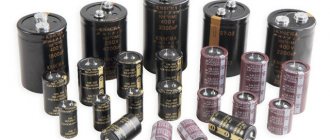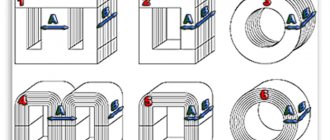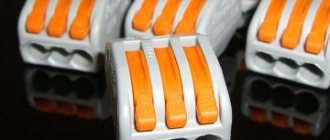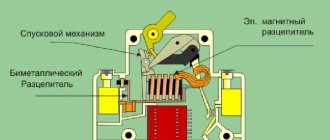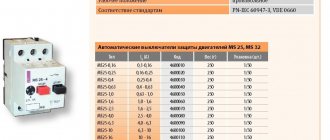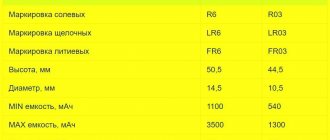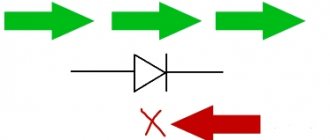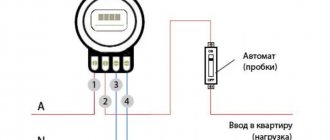What is the main thing about the materials that are used for electricity? Their main property is conductivity. Such materials are divided into three types - conductors, semiconductors, and dielectrics.
Today's article is dedicated to these materials. We will look in detail at what they are, what they are used for and how they pass current.
So let's start with the conductor
A conductor is matter that consists of free carriers of charged particles. When these particles move, thermal energy is generated, which is why they gave it the name thermal motion.
There are two main parameters of a conductor - resistance, denoted by the letter R, or conductivity, denoted by the letter G. Conductivity is the opposite indicator of resistance - G = 1/R.
That is, a conductor is a material that conducts current.
What is a conductor? Metals are the best conductors, especially copper and aluminum. Also conductors are salt solutions, wet soil, and carbon. The latter has found wide application in working with sliding bonds.
An example of such an application is brushes in an electric motor. The human body is also a conductor of electric current. But the electrical conductivity properties of the above materials are still lower than those of metals.
The very structure of metals contains a huge amount of free charged particles, which makes them the best conductors.
When a metal is exposed to electric fields, a process called electrical induction occurs. That is, charged particles begin to actively move and distribute.
General information
Any object that exists in nature, both living and non-living, is called a physical body. It consists of a substance that is formed from elementary particles that have physical and chemical properties. They are determined by the number of molecules that are formed using interconnected atoms. In turn, they consist of elementary particles - neutrons and protons. Electrons rotate around them at a certain distance in an orbital. They are carriers of a unit electric charge.
Scientists have conventionally accepted that electrons have a negative charge, and protons have a positive charge. Moreover, in any shell, core, the number of minus and plus particles is the same. Therefore the atom is electrically neutral. In order for this state to change, it is necessary to apply an external influence to the body. As a result, the atom can lose or, conversely, gain several electrons, that is, turn into an ion. This phenomenon is typical for liquids that undergo various reactions.
Electrons not bound to atoms are called free. Any negative particle that receives energy from the outside can break the bond and escape beyond the core. For example, when absorbing a photon of light or radioactive decay. The number of free electrons differs in different materials . It was precisely by their quantity that the scientific council decided to divide all substances into two large classes:
- conductors;
- dielectrics.
As an example, copper can be cited as a good conductor, and glass as a non-conductor. This division made it possible to show which bodies can participate in the generation of electric current and which cannot. A quantitative characteristic of the phenomenon is electrical conductivity - the ability of a physical substance to conduct current. After all, the latter is formed during the ordered movement of free charge carriers. The more of them there are in an object, the stronger the transfer force arises.
It should be noted that if no external force acts on the body, the movement of unbound electrons occurs chaotically. In this case, the particles collide with atoms and defects in the crystal lattice, giving off and receiving energy. But the current does not appear, since the energy of the system is in an equilibrium state.
Let's move on to dielectrics
A dielectric is a matter that is not subject to the influence of an electric field, that is, it does not pass current through itself, and if it does, it is in an insignificant amount.
This happens because they do not have freely moving particles - current carriers, since they have a very strong atomic bond.
In life, such substances are rubber, ceramic components, glass, certain types of resins, distilled water, carbonite, porcelain, textolite, as well as dry wood and so on.
It is thanks to their properties that the above materials are the basis for the housings of various electrical appliances, switches, sockets, plugs and other devices that come into direct contact with electricity.
Insulating elements in networks are also made of dielectric materials.
But not everything is so simple with dielectrics. If you pass a higher current through them, store them or install them in an environment with high humidity, or use them incorrectly, you can cause a phenomenon called “insulator breakdown” - this means that the dielectric material loses its non-conductive functions and becomes a conductor.
That is, to describe the situation in a nutshell, the main thing in a dielectric is its electrical insulating abilities. Thus, these devices help us protect ourselves from the traumatic effects of electricity.
The properties of a dielectric are measured by its electrical strength - this is an indicator that is equal to the breakdown voltage of the dielectric.
What have we learned?
The division into conductors and non-conductors of electricity is carried out depending on the number of free electrical charges in the substance. Conductors are substances in which there are many free electrical charges, typical representatives are metals. Nonconductors (dielectrics, insulators) are substances in which there are few or no free electrical charges; typical representatives are glass and plastic. In addition, there are semiconductors that occupy an intermediate position, such as silicon.
Solid Explorer
Based on the Material UI concept, the explorer can be fully personalized with icons, themes and other design elements. To edit or move documents, you can simply drag them.
Functions:
- unpacking and archiving;
- document management in the cloud;
- encryption;
- analysis of large files;
- batch renaming;
- Chromecast support and much more.
Astro File Manager
The application was one of the first explorers for Android and other operating systems. Over many years of high-quality support and regular updates of the interface and functionality, it has gained incredible popularity and a loyal army of fans. The utility occupies the top positions in the ratings of explorers, next to ES File Explorer and Total Commander. With an uncomplicated interface and a focus on productivity, Astro ensures that viewing documents or sorting files doesn't require a lot of extra clicks. The main screen displays standard information: files by extension, status of internal and internal memory, cloud, recent and favorite files. In a word, everything you might need!
The “Add” button makes navigation even more convenient by calling the wizard for setting up a local, FTP, SFTP and SMB server. Supports social networks and cloud services: OneDrive, Google Drive, Dropbox and Facebook. Also, if you don't know where the file is, you can use the search bar.
Advantages:
- detailed search including modification date and document size;
- attractive and intuitive interface.
Flaws:
- no split screen mode;
- There is no "Cut" button.
The list of functions does not exceed the standard set for a file manager and includes .ZIP and .RAR compression and extraction, application backup and TaskKiller, which extends battery life. The main advantage of Astro is that it primarily focuses on copying, pasting, sorting data on the phone or wirelessly. Does not contain advertising! The program has a built-in application manager that offers management of installed utilities and running processes. If you don't want to share this data, turn off the feature in Astro's settings. Due to its optimized functionality, Astro may not be suitable for everyone. Although the application has become popular precisely because of its ease of use.
MiXplorer
For some unknown reason, MiXplorer is not available on Google Play, so most users simply do not know about it. Like all other explorers, the app has all the basic features: dual window, text editor, image and media viewer, ZIP files, root, FTP, etc. However, unlike other programs in the list, MiXplorer supports 19 for free cloud services. The only drawback that was discovered is the occasional critical error and reboot.
Total Commander
Total Commander began and still lives on as a computer application. The program's interface and its unique performance automatically make it a professional-level utility. The first thing that catches your eye is the black theme with huge icons, similar to the Windows design. According to the developers, this emphasizes the business class of the application. There is no support for themes or any other personalized content, so get used to it. Total Commander supports FTP, SFTP, WebDAV and LAN communication. Synchronization with OneDrive, Google Drive and Dropbox is included, but you need to download free plugins to access it. Among the unique features are an application manager and an access editor in Russian.
Advantages:
- fast file copying speed;
- flexible setup;
- can replace many useful tools;
- a huge number of options, such as changing the theme, customizing the menu and editing shortcuts;
- built-in tools and plugins that expand functionality;
- double window mode;
- visually attractive font and comfortable use in the dark.
Flaws:
- The only display option is as a list.
If you are used to the standard Windows Explorer, then Total Commander's interface will not disappoint you. Otherwise, this is the best file manager on Android at the moment.
The Swiss company Ghisler Software GmbH introduced the first version of its software for Android in 2011. Previously, it was available exclusively for Windows computers. Over 10,000,000 downloads, support for 25+ languages, excellent service and support for many years. In the standard version, Explorer gives you access to the most important tools for sorting folders and files. In the Play Store you can download and install free plugins that expand the functions of the utility. Total Commander works not only with folders and files, but also with installed applications, making it one of the best file managers for Android.
In terms of range of features, Total Commander is one of the best Android file managers on the market. With dual window mode, users can easily move files and folders from one directory to another without closing the original directory. You can set the default dual window mode. For example, for landscape orientation. A powerful search will find everything you've lost. The developers are concerned about the safety of your data and allow you to search by parameters such as the date of creation or modification and the approximate size of the document.
A user, especially one who is not familiar with the PC version, simply will not be able to understand some functions of the application - there is not enough available help. It is a reliable guide for anyone who needs comprehensive data about files in Android. Try to get used to the interface as quickly as possible - this will make it easier to use all the functions of the application.
MK Explorer
Another simple file manager with an attractive interface. Has all the basic features of a good Explorer, including split screen, search, archiver, root, SD card support and much more. In addition to the file manager, it also has a built-in gallery, audio player and text editor for viewing all your documents in one program. There is support for hotkeys.
Experiments by Otto von Guericke
The first systematic studies of electrical phenomena date back to the 17th century and are associated with the name of the German scientist Otto von Guericke (Fig. 1).
Rice. 1. Otto von Guericke ()
Otto von Guericke conducted a huge number of experiments and determined that electricity could be of “two kinds.” He called one “glass” and the other “resin” . The difference, as we understand it, lies in the sign of the charge acquired by the material. As already discussed in the previous lesson, if we rub a glass rod on paper, we will get a positive charge on the rod. If you rub an ebonite stick or amber on fur, you will get a negative charge. And Otto von Guericke was the first to establish how these charges interact with each other: like charges repel, and unlike charges attract.
Superconductivity
The property of a material to have zero electrical resistance at a temperature below a certain value is called superconductivity.
For some conductive substances, this ability occurs at cold temperatures close to the chemical state of liquid helium.
In 1986, substances with high-temperature superconductivity were discovered. For example, ceramics made of oxygen, barium, copper, lanthanum do not conduct current under normal conditions, but due to heating they become a superconductor.
In practice, substances are used that transmit electric current at 58 degrees Kelvin or more, that is, at a temperature above the boiling point of nitrogen.
Solid high-temperature superconductors are most often used. Liquid and gaseous ones are used less frequently. All these materials are necessary for the manufacture of modern electrical devices of various capacities.
File Manager
Originally created by Asus for its first smartphones, File Manager is now available on all Android devices. Despite the primitive name and platform-specific origin, the application has wide functionality and is distinguished by its reliability. The immediate impression is that Asus has improved the Astro and made it a little better. The main screen provides quick access to the Storage Analyzer - especially for those who like to keep everything under control. There is also a Hidden Office button - a local password-protected folder for personal confidential files. Everything File Manager does, it does well. Navigation and a focused approach to simple file management make the application pleasant and comfortable to use.
Repetition
In this lesson, we will continue to get acquainted with the topic “Electrical Phenomena”, and consider issues related to the conductivity and non-conductivity of electric charge materials, and also get acquainted with the first simple instruments for measuring and recording charges - an electrometer and an electroscope.
In the previous lesson, we found out that electrical phenomena exist, that they can be observed, and that they are associated with the interaction of different charges. We also found out that these interactions are determined by the action of force, and, accordingly, the magnitude of the interaction is determined by the magnitude of the electric charge. We also learned that like charges repel, and unlike charges, on the contrary, attract.
Now we have to get acquainted with how these electric charges can move and pass from one body to another.

